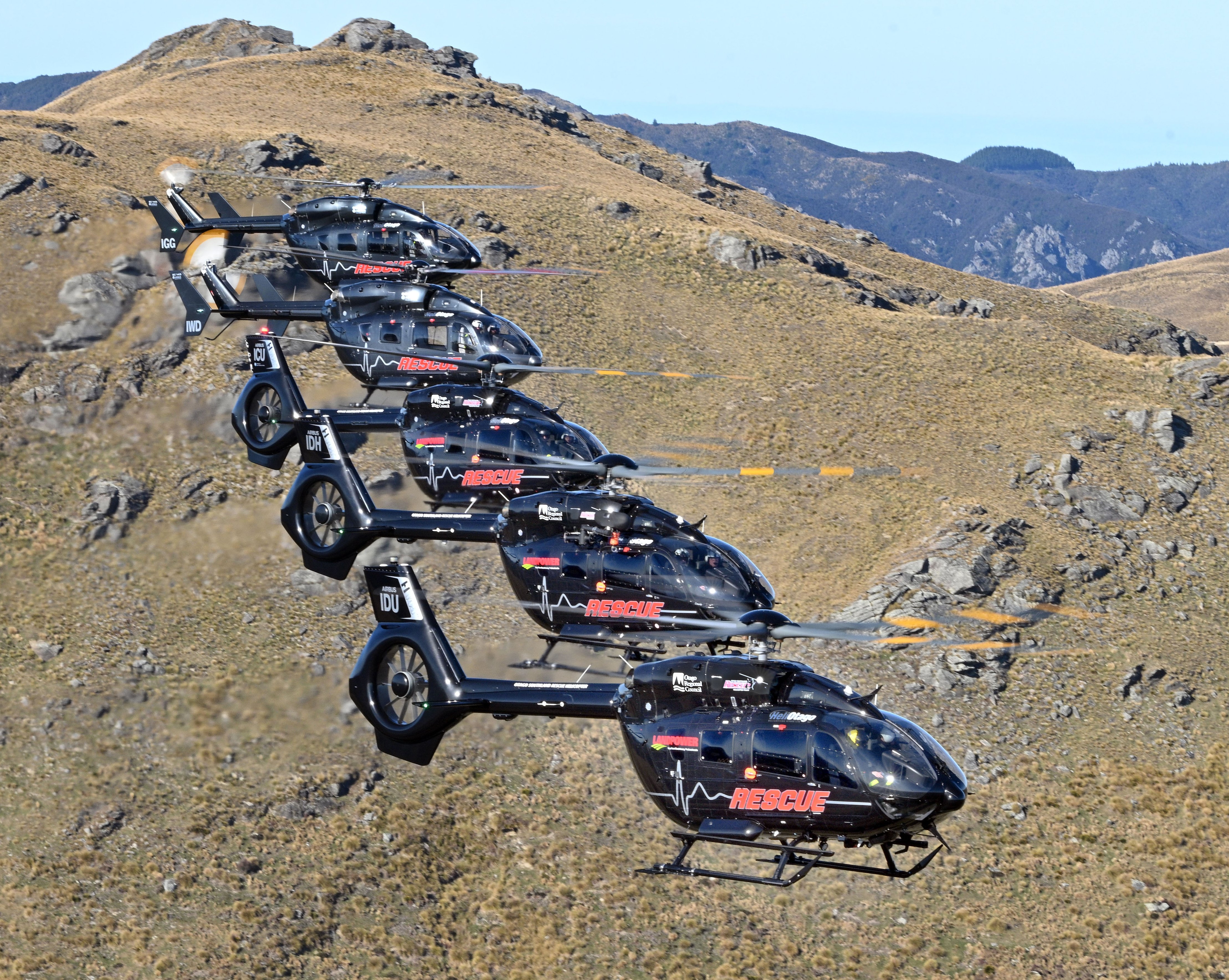
The trust presented its annual report to an Otago Regional Council meeting yesterday.
The service continued to be busy with 2165 missions for the 2024-25 year, up from 2057 the previous year, with accidents increasing by 12%.
Helicopters Otago EMS Ltd was contracted to run the service in the southern region.
Operator Graeme Gale said the service had grown over time and now had more than 100 staff. They worked in various medical fields and covered an area from 400 nautical miles south of the South Island up to Christchurch and over to the West Coast. They had their own medics after no longer being connected with St John.
The operation had 100% service availability and 98% fleet availability. It had 10 dedicated rescue helicopters, five usually on call and five on back-up.
Mission numbers have escalated over recent years, doubling from 2018, when there were 1023 missions.
Mr Gale said he had concerns around funding. He said there was a major shortfall in what he was receiving from the government compared to the helicopters he was flying now.
"Under the model we get 80% from the government and 20% from the community and it is totally unrealistic. We have a small community of under 400,000 and it is just not doable." Mr Gale said.
"We are extremely lucky that we have a commercial arm which sits alongside and helps subsidise the air ambulance. It is not the perfect model and do not ever go into this model," he warned the council.
"It is lucky we do lots of hours, but it is a challenge. It is a very big deal and you need to get it right."
The service was so capital intensive. If he had stayed still and was using helicopters from 5-10 years ago then he would not be able to do things like flying at night and maintaining the current standard of care for patients. Technology changed very quickly.
He did not hold out much hope more funding would be made available by the government.
‘It is so tight and tough at the moment from central government that it is going to be a challenge."
When asked to estimate the size of the shortfall he was facing he said about $2million.
The next contract for the air service was due at the end of October next year and would change from a five-year contract to a 10-year contract.
They had registered interest and had heard nothing since, Mr Gale said.
Over the past year, the trust had received $335,000 in bequests, which was more than usual. Trustee Stephen Woodhead said some years about $200,000 was given in bequests.
The trust had also funded additional equipment, such as blood chiller packs, an additional webcam to enhance monitoring of weather conditions, including for night approaches, as well as five new stretchers and CO2 capnography kits.
Mr Woodhead said in a statement the community was generous with its donations and bequests, and the gifts really made a difference in ensuring the region maintained a world-class service.
The Otago Regional Council donated $350,000 annually to the service and the ILT Foundation gave $150,000.











